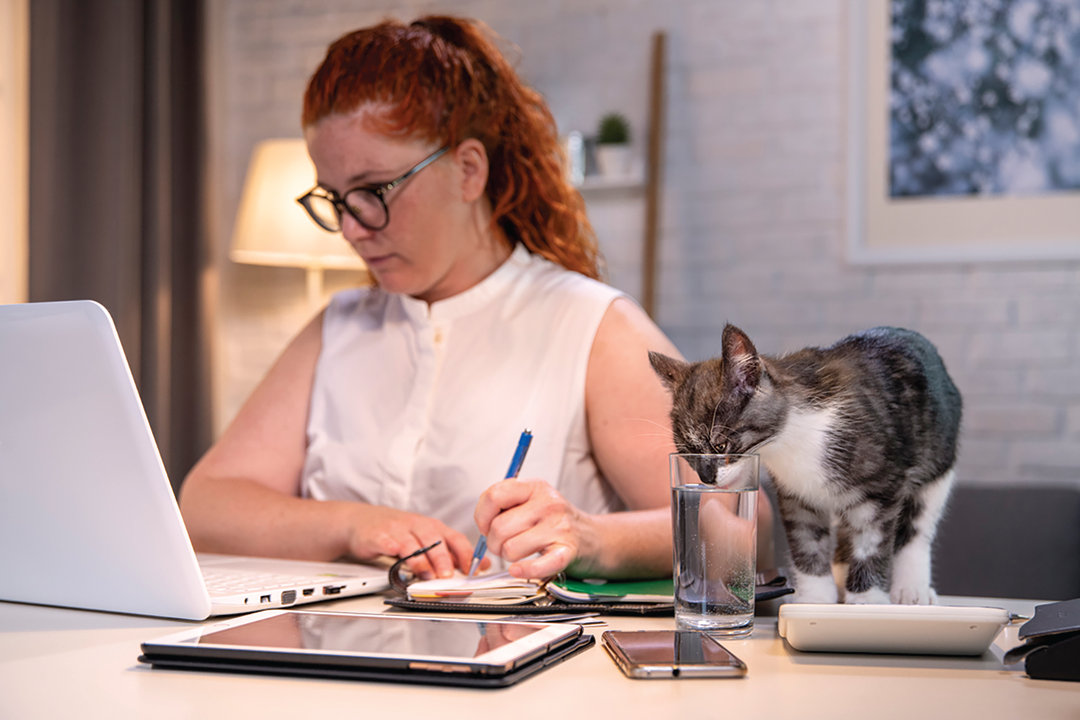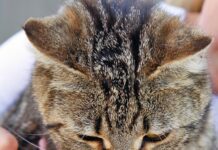Water is one of the most important components of your cat’s diet. Your cat gains water by drinking, eating, and from metabolic water (produced by her body, which is 65% water). Cats lose water via urine, stool, and evaporation through their respiratory system. They can also lose excess water if experience vomiting or diarrhea.
Most cats need to consume about 4 ounces of water per 5 pounds of lean body weight per day. This means the average 10-pound cat should drink about 1 cup of water per day.
“When it comes to dehydration problems, we typically think of the LUTS (lower urinary tract symptoms) or CKD (chronic kidney disease) cat, and the constipated cat, but I would pose that all cats, even healthy cats, can likely benefit from drinking more,” said board-certified veterinary nutritionist and director of Veterinary Technical Communication at Purina Jason Gagné, DVM, DACVN (Cornell 2009) during a presentation at a recent American Association of Feline Practitioners meeting.
Dr. Gagné suggests that increasing the average cat’s daily water intake by about 50% would likely be beneficial.
Unfortunately, this can be a challenging goal, as cats’ overall thirst and drive to drink is less than that of dogs (and humans).
Excessive Thirst
If you notice your cat drinking frequently or unusually draining her water bowl, she may be showing signs of diabetes, kidney failure, or hyperthyroidism, among other potential diseases.
If so, a visit to the veterinary clinic is in order to get a diagnosis and begin treatment and management.
Promising Supplement
Canned cat foods contain up to 75% water, while dry foods usually contain 10% or less water, so feeding canned food may well be worth the added expense and effort. This is even more important for cats with health conditions such as chronic kidney disease, diabetes, uroliths (bladder stones), or constipation. Encouraging fluid intake is part of the treatment for these problems, but it’s not always easy to find enticing methods to increase water intake.
Dr. Gagne and Purina have worked on a supplement to encourage feline drinking. Hydra Care, from Purina Pro Plan Veterinary Supplements, is a nutrient-enriched water supplement aimed at encouraging cats to drink more through the use of flavor additives.
Hydra Care also uses organic osmolytes to help ensure that the water your cat does consume is efficiently absorbed and retained in cells. In research performed thus far, Dr. Gagne found that cats consumed about 50% more water each day with Hydra Care compared to water alone.
The researchers found that, when the supplement was given every day, cats had more dilute urine, which means it had more water in it. This higher urinary water content may help prevent the formation of urinary crystals and stones. It is unknown whether the potential benefit would carry over when using the supplement less frequently.
An additional study provided healthy cats undergoing surgical procedures with access to Hydra-care enriched water, regular water, or both for a day or two prior to surgery. A subset of cats who just got plain water received intravenous (IV) fluids during their procedures. The study showed that the cats who had the option to drink the enriched water had hydrated themselves well enough to equal the benefit of IV fluids. While Hydra Care is available without a prescription, it’s wise to discuss its use for your cat with your veterinarian.
Homework
How can you keep your cat hydrated? Most cat owners know many tricks to get their cats to drink. A dripping faucet or commercial cat fountain may help. Other cats seem to get most of their water from licking a wet bathtub or sink. Finicky cats may want their water bowl in a certain location or will only drink from a certain type of water bowl.
Be sure your cat always has fresh, clean water. That may mean emptying and refilling the water bowl twice a day to prevent any dust or staleness.
Try different types, materials, and sizes of bowls to see which ones your cat prefers. Place the water bowl in a good location (not near the litterbox). It should be easily accessible. You may need multiple bowls if you have more than one cat. Studies suggest that some cats will drink more if their food and water bowls are side by side.
If your cat is a diehard “it’s dry food or nothing” feline, you can try adding some water to her kibble. You can also discuss with your veterinarian whether to add a nutrient-enriched supplement to your cat’s drinking choices before trying this option.
Signs of Dehydration
- Dry, sticky gums
- Tenting of the skin (that is, not snapping back into place when it is gently lifted). Be aware that some healthy geriatric cats may demonstrate this sign
- Decreased activity
- Decreased urination
- Constipation
- Lack of appetite




